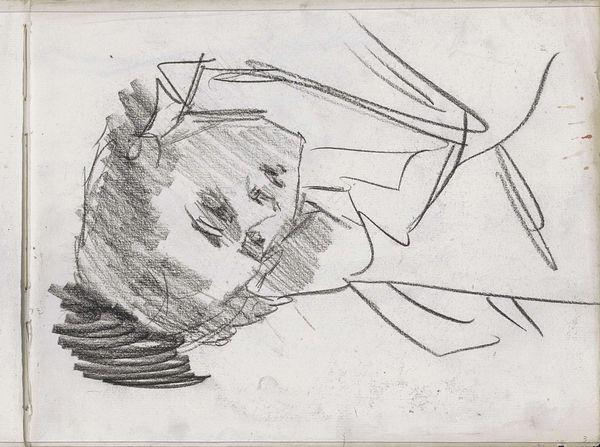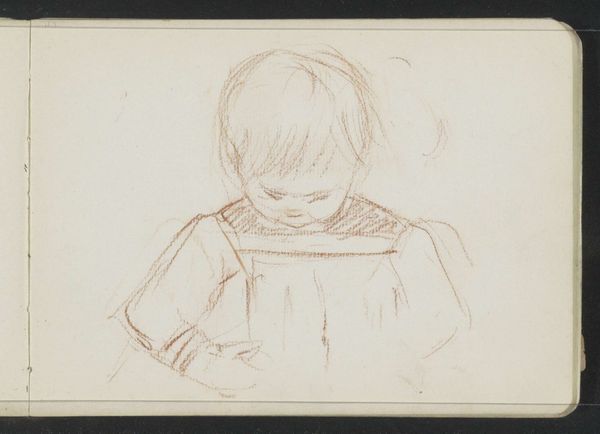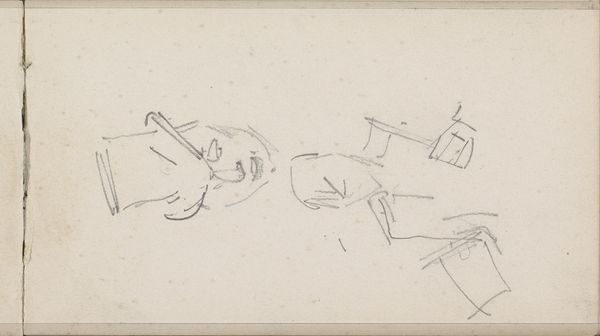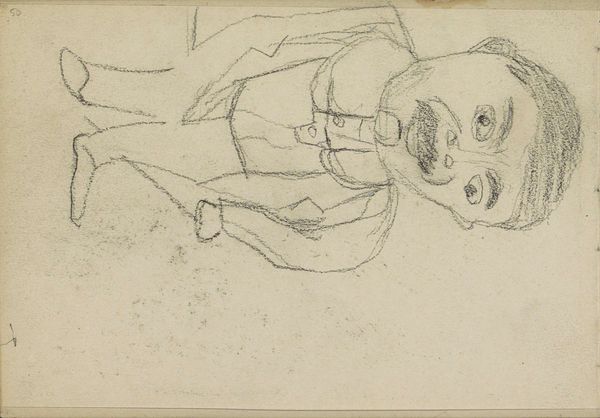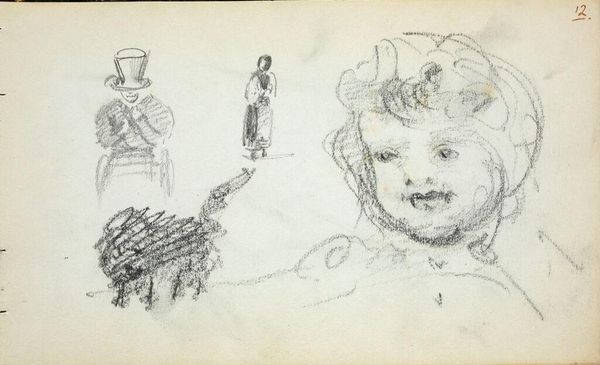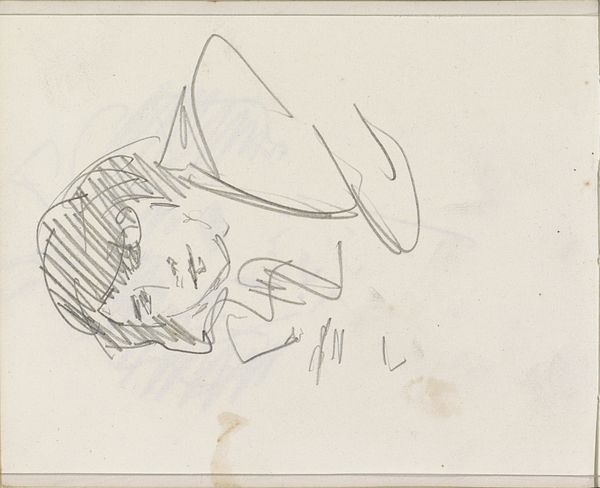
Dimensions: image: 384 x 279 mm image: 229 x 130 mm
Copyright: © Tate | CC-BY-NC-ND 4.0 DEED, Photo: Tate
Curator: Peter Coker's "Nicholas, Two Studies for Table and Chair" presents us with two intimate pencil sketches of a young boy. The dimensions of the larger sketch are 384 x 279 mm, while the smaller is 229 x 130 mm. Editor: There's a disarming vulnerability in the child's expression, and the sketchiness of the lines conveys a sense of immediacy and perhaps a touch of melancholy. Curator: Coker's work often reflects on the everyday, elevating ordinary subjects. Here, childhood becomes a site for exploring themes of identity and representation, viewed through a lens of social observation. Editor: The rough quality, almost unfinished, makes me think about childhood itself – a state of becoming, always in progress. Curator: Certainly, and the context of the 20th century, with its shifting social structures, would have influenced Coker's perspective on family and youth. Editor: It's a poignant piece; the simple lines speak volumes about the complexities of seeing and being seen. Curator: Indeed, considering its display within institutions like the Tate, it invites us to reflect on the politics of looking and the narratives we construct around childhood. Editor: It’s a sketch that lingers in the mind.
Comments
tate about 1 month ago
⋮
http://www.tate.org.uk/art/artworks/coker-nicholas-two-studies-for-table-and-chair-t03310
Join the conversation
Join millions of artists and users on Artera today and experience the ultimate creative platform.
tate about 1 month ago
⋮
In 1955 Coker began a series of paintings inspired by a butcher's shop near his home in the East End of London. Table and Chair developed from a number of related sketches, two of which are shown in this display. In the painting, Coker included a sheep's head on a piece of newspaper alongside a portrait of his son. The lively and enquiring face of the child contrasts with the impassive face of the dead animal. This stark depiction of a domestic interior is typical of British realist painting of the 1950s. Gallery label, August 2004


